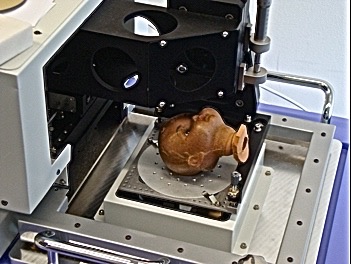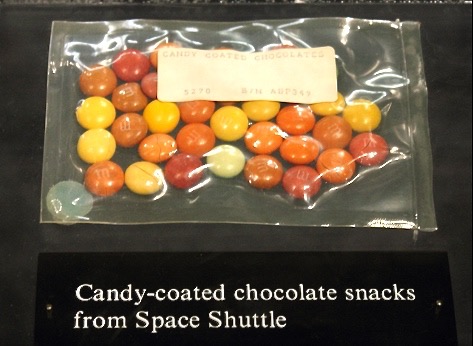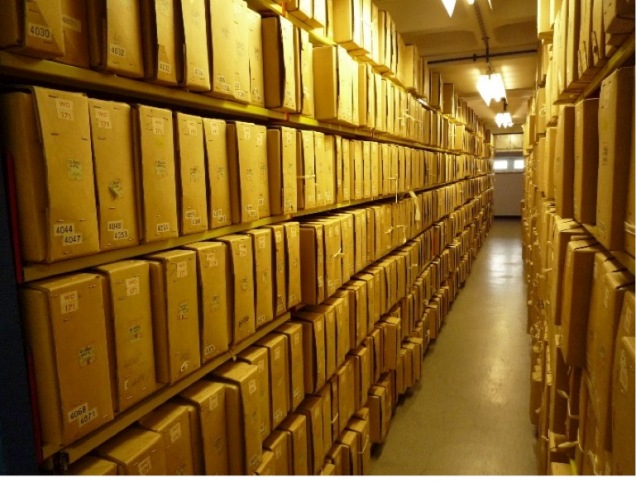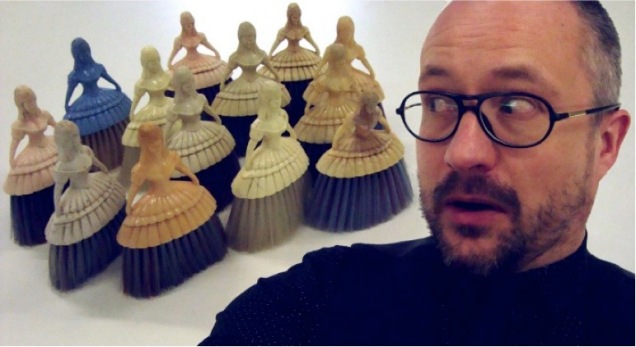Premise 1: In one way or another, we have been doing heritage science for ages. I will use this term to describe the science of heritage, i.e. how we manage, interpret, conserve heritage as well as provide access to it [1]. In his lecture at the Royal Institution in 1843, Michael Faraday lectured about pollution importantly contributing to book degradation. A bit of poignant trivia: Faraday was trained as a bookbinder before he became one of the most influential scientists of all times.

Premise 2: Heritage science is culturally dependent. The fact that ‘heritage’ is a culturally dependant term gives our field of scientific enquiry an interesting angle: the value (or, retrospectively, ‘impact’) of the science that we do depends on the culture we inhabit. Research on a 1970s piece of plastic furniture could be exciting in the context of a design museum and completely rubbish in the context of a society in which such objects do not have ‘cult’ status. I use the term deliberately.

Premise 3: Heritage science is inherently biased. If heritage is stuff (tangible or intangible, material or digital) with cult status, don’t scientists, by doing research on it, contribute to its glorification? The heritage value of an object could well be its scientific interest – which makes the science that we do inherently biased, because by studying an object we implicitly contribute to its status. Dolly the sheep at the National Museum of Scotland is a case in point.[2]

Premise 4: Heritage science can be neither fundamental nor experimental. While in the use of mock or surrogate objects for research, the experimental approach principles typical of scientific endeavour are embedded, science of heritage cannot be repeatable because heritage is not an experiment. Equally, there can be no fundamental research question because the objective of heritage science is always known.

Premise 5: Heritage science is multivariate. This is not to say that it is not exact science; however, since the context of heritage can be unknown, there can be any number of variables affecting the heritage system under observation – in this, the premise of heritage science comes close to social science, although the ‘society’ we study is a population of ‘things’ – with their individual lifetimes and dynamics of change and interactions (all culturally dependant, of course).

Premise 6: Heritage science helps to interpret heritage. The heritage value of an object is in the benefits we obtain from interaction with it, not in its (material) representation (unless we believe that an object has value in and of itself). Through our senses, we interpret them and extract information from them. This metadata can become more valuable than the item itself; a study of the value of mineral collections has shown that curators may well value the metadata more than the objects.[3] The market value of this metadata can easily be immeasurable.[4]

Premise 7: Heritage science provides evidence for sustainable conservation. Keeping stuff for longer is inherently sustainable, but can keeping it for too long (the society has a view on what is acceptable) become an unsustainable proposition?[5] How do we balance our need to own, with our needs to breathe and eat? We need evidence to provide balance. I risk sounding Darwinian when I say that when time has its way with heritage, it can be for the better.

Premise 8: Through improved access, heritage science contributes to well-being. Heritage that is accessible, in its preserved authentic form or as a (digital) reproduction, is a “resource for economic growth, employment and social cohesion”[6]. Quite how we should balance the extraction of economic or social benefits from the heritage resource with its preservation is an open question of heritage resource management and the science supporting it.

Premise 9: Heritage science is proof that there is no world of Two Cultures [7]. A scientist, researching heritage defies the existence of the divide: there can be no scientific research of heritage without a contribution by humanities research. Heritage science also successfully bridges science and culture, because it provides an attractive vehicle to convey ideas and concepts related to technology and engineering, as well as culture and society.

Premise 10: Heritage science urgently needs to develop its identity. It yet needs to populate a defined space; it needs a voice to represent researchers; it needs a unifying theory; it needs to define its grand challenges.

[1] http://en.wikipedia.org/wiki/Heritage_science
[2]http://www.telegraph.co.uk/news/uknews/1422288/Dolly-the-sheep-to-be-stuffed-for-display.html
[3] J. Robb, C. Dillon, M. Rumsey, M. Strlic: “Quantitative Assessment of Perceived Value of Geological Collections by ‘Experts’ for Improved Collections Management”, Geol. Cur., 9 (2013) 529-543
[5] C. Dillon, W. Lindsay, J. Taylor, K. Fouseki, N. Bell, M. Strlic: “Collections demography: stakeholders’ views on the lifetime of collections”, Climate for Collections Conference, Munich, Doerner Institut, 7-9 November 2012, Postprints, J. Ashley-Smith, A. Burmester, M. Eibl (Eds.), Archetype, London, 2013, pp. 45-58.
[6] http://ec.europa.eu/culture/library/publications/2014-heritage-communication_en.pdf

Nice article. I’m sure if there are few heritage scientists in the same room they could discuss about those point during hours!
I just would like to comment the point 4. Personnaly I think experimental sciences don’t need to be absolutly ”reproductible” on a ”sample” point of view. It must be reproductible if we look at the same sample in the same conditions, which is never the case in heritage science. But when we look at ”usual science” it’s also like this if we considered details. Many common techniques daily used in laboratories are not sensitive enought to distinguished between two ”pur silicon wafer”, but still if we dig more, we could find the difference. It’s all about progress in our instrument. Which allow us to discover new properties!
Even with an widely spread experimental technique such as S.E.M. many mistakes can be done, because many people make experiences thinking that ”its reproductible”. Any situation is different, the experience is to be able to understand the material considering any factors (which is very very hard I admit).
I think experimental sciences is more about the ”behavior”. ”How to investigate phenomena” which imply having a very good understanding of our instruments. I think this point is not an easy task, mostly in heritage science due to the very high trans-disciplinary aspect.
If we focus only about the reproductibily, experiental scientists will be stuck into labs. And worst, will be stuck into a dead end path of science as they make the samples in the way they want (or consider it).
But we don’t necessary have a very good understanding of what happen, so we are sometime restricted to reproductivity in order to increase our understanding.
If you are using ToF-SimS, you will not have reproductible results anyway and it seems to not be a problem for surface scientist. Indeed the surface you will analyse is never the same, as atoms are extracted. But worst! the intensity of the primary ion, the charges, the experimental condition are not the same. If you look at two silicon wafer, you will find the same pics in general (without contamination) but it’s mostly because we don’t look at the details (very complex). But those details could reveal more informations.
Most of scientist don’t consider the ”past” of materials for example. But if we start to consider it, we could (maybe) find outstanding material science facts.
I see heritage science as one of the most realistic experimental sciences (material at least) as it takes in consideration any possible aspects of materials. It’s just a next step of complexity and it’s what science , in general, is also about.
If we are able to identify iron again and again, and again… but you never adapt your technique to investigate composite materials, because the understanding is limited, it’s a technical behavior not a scientifical one. The science push us to face new challenges, to discover new things, to understand. Which such considerations heritage science is a great challenge for experimental science in general.
But it is compulsory, in heritage science, to work together. Samples are very complex, there are a lot of techniques and even the ”context” of the material is considered (such a crazy scientific adventure..). Chemists and physicists, despite being close, have different way to deal with samples and experiments. In heritage science, much more fields are involved.
Scientist should work together, but it’s not always the case because they can do their own experience in their own labs. I don’t think heritage scientist has this possibilities (which link to point 10 of this article maybe).
Trans-disciplinary was not so much considered in ”science”, it is something Heritage science need and must learn. But not just how to communicate but how to work.
It is maybe the field which could break walls between fields in science.
Also studying old items in such context could make scientific discoveries. For example understanding of ceramics. It’s a material currently used in engineering and it’s also among cultural ones. During history, historical ceramics had any kind of impacts which could lead to a better understanding of the material in general.
Maybe I’m too optimistic regarding science, but I started in heritage science as a student in physics mostly because of ‘science’. Of course I love history and old materials, understand more about it is fascinating. But for me it was also a topic where I can consider any kind of influence in my work, such as biology, chemistry, the past of the samples and even the social aspects. It was a great challenge for me, as a scientist. Science should not have walls.
In natural science we put walls, we simplify, in order to be able to understand. In heritage science we can’t really, so we also look forward, willing to learn more. It’s a great scientific behavior!
LikeLike